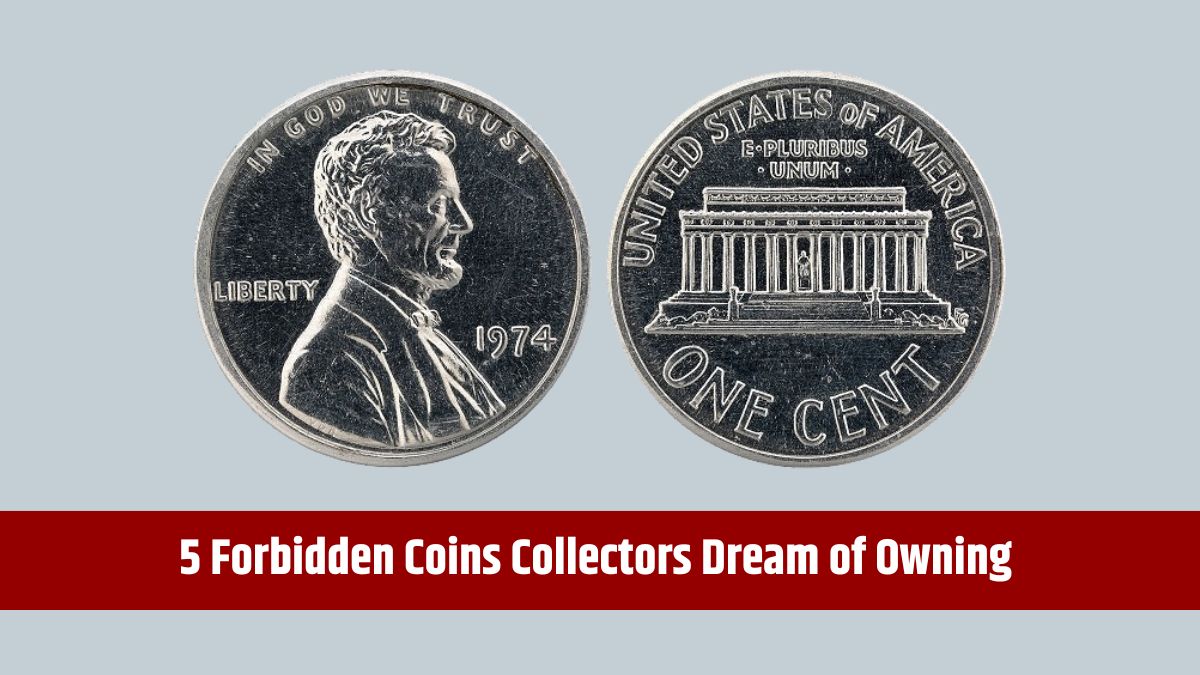Coins have long been more than just currency. They’re historical artifacts, reflections of their time, and sometimes, symbols of mystery and intrigue. Among these, “forbidden coins” hold a unique allure for collectors. Their rarity, along with the controversies and secrecy surrounding them, turns them into coveted treasures. Let’s cut into five such coins that collectors fantasize about but often cannot legally possess.
Double Eagle
The 1933 Saint-Gaudens Double Eagle is the crown jewel of forbidden coins. Designed by Augustus Saint-Gaudens, this $20 gold piece marked the end of an era. In 1933, during the Great Depression, President Roosevelt halted gold coin circulation, recalling all gold coins for melting.
Why It’s Banned
Nearly all 445,500 minted Double Eagles were destroyed. A few escaped this fate, but the U.S. government considers them stolen property. Private ownership is strictly prohibited, except for one coin auctioned in 2002 for $7.59 million.
The Drama
The coin’s history reads like a spy novel. Smuggling, secret hoards, and legal battles spanning decades add to its legend. No wonder collectors are enchanted by its forbidden status.
Aluminum Penny
The 1974 Aluminum Penny came into existence when the U.S. Mint experimented with alternative metals to counter rising copper costs. About 1.5 million pennies were minted but never circulated, as the project was scrapped.
Why It’s Banned
The Mint ordered all coins destroyed, yet a few survived. When one surfaced in 2014, the government swiftly seized it, maintaining its claim of ownership over these coins.
The Intrigue
Rumors of congressmen keeping these pennies as keepsakes or employees pocketing them add to their mystique. Their elusive nature makes them irresistible to collectors.
Peace Dollar
The 1964-D Peace Dollar, intended as the final U.S. silver dollar, holds a mythic status in numismatics. The Denver Mint struck over 316,000 coins, only to have them melted before release.
Why It’s Banned
Officially, no 1964-D Peace Dollars were ever circulated, and ownership remains illegal. Yet, whispers of surviving specimens persist, tantalizing collectors.
The Mystery
Despite unverified claims of private ownership, no authenticated example has ever been revealed. This keeps enthusiasts on the edge of their seats, hoping to uncover one of these elusive coins.
Krugerrand
The Krugerrand, South Africa’s famous gold coin, became a global symbol of apartheid-era controversy. First minted in 1967, it was banned in countries like the U.S. during the 1970s and 1980s as part of sanctions against apartheid.
Why It Was Banned
While the U.S. lifted its ban in the 1990s, some restrictions remain globally. During its forbidden years, owning a Krugerrand symbolized defiance and attracted premium prices in underground markets.
The Story
Krugerrands carry political weight. Their forbidden history intertwines with anti-apartheid activism, making them a compelling, if controversial, collectible.
Roman Coins
Ancient Roman coins have fascinated collectors for centuries. However, those excavated from restricted archaeological sites—particularly in Italy or Greece—are often considered state property.
Why They’re Banned
Strict cultural heritage laws deem looted artifacts, including coins, illegal to own. Many such coins are smuggled and sold on the black market, leaving buyers at risk of legal trouble.
The Thrill
Each of these coins carries the weight of history and the shadow of controversy. Collectors debate the ethics of ownership, adding another layer of intrigue to their pursuit.
Owning any of these forbidden coins isn’t just about the coin itself—it’s about the story, the risk, and the rarity. For numismatists, these factors create an irresistible blend of treasure and taboo.
FAQs
Why is the 1933 Double Eagle illegal?
It’s considered stolen property by the U.S. government.
Are 1974 Aluminum Pennies still government property?
Yes, any found specimens are claimed by the U.S. Mint.
Did any 1964-D Peace Dollars survive?
Rumors persist, but none have been authenticated.
Can I legally own a Krugerrand?
Yes, but some restrictions may apply in certain countries.
Why are Roman coins controversial?
Many are looted from restricted archaeological sites.






